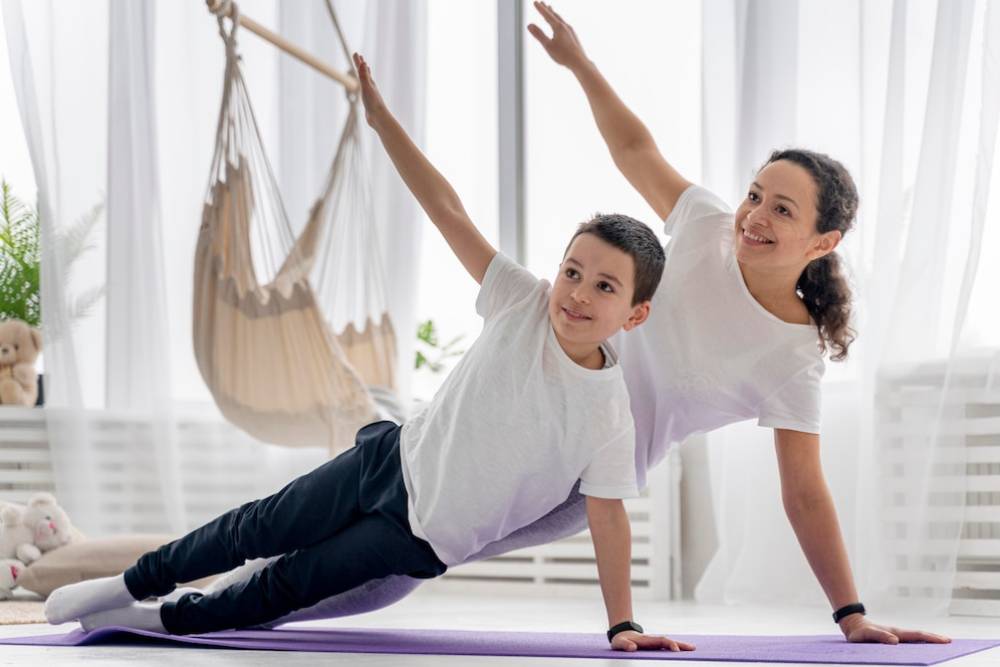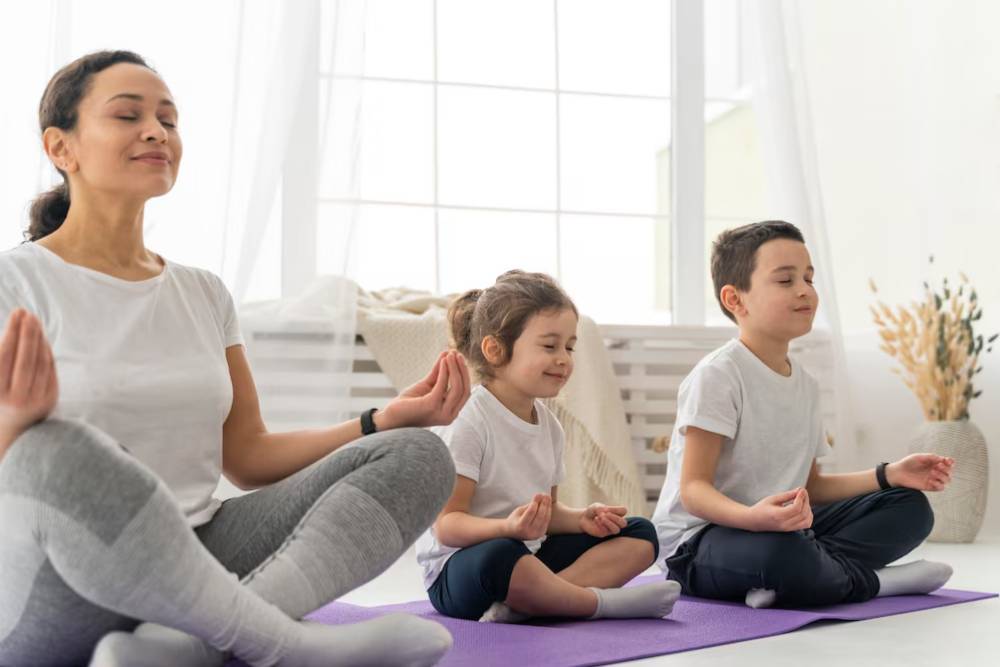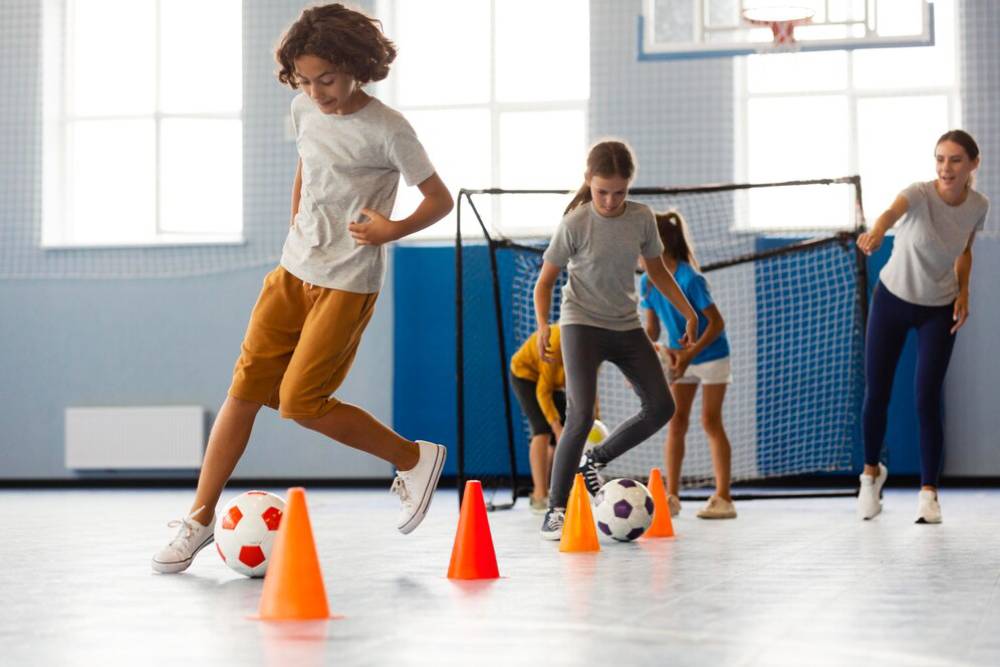
How to Encourage Kids to Stay Active at Home
In the modern digital age, screens are ubiquitous, making it more difficult for children to remain active. Video games, streaming, and online courses draw children away from physical activity. However, it is important to get children active at home. Being active improves their physical health and mental well-being. This blog provides advice on creating a space where children can play actively and have fun at home.
Why Fitness in Children Is Important
Exercise is central to children’s development. It builds bones and muscles, enhances heart health, and supports a healthy weight. Physical activity improves brain function, improves mood, and reduces the risk of anxiety and depression. In the UK, increased childhood obesity means encouraging fitness is critical. Household activities and physical play can enable a lifetime of healthy habits.
The Consequences of Sedentary Habits
Being a couch potato is not good for children’s health. Being stationary for long periods and moving around too little will harm your body. It can lead to poor posture, and less powerful muscles and boost the likelihood of lifestyle diseases in later life. Getting children active throughout the day builds healthy motor skills. It also lays down good habits from a young age.
Real-Life Applications
Take the case of the Smith family in Manchester. Both parents were working from home during the pandemic. Their two children, aged 8 and 10, spent more time indoors. Concerned about their children’s fitness, the Smiths incorporated daily exercise into their lifestyle. They noticed significant changes in the physical well-being of their children. They also observed improved concentration and overall happiness.
Step-by-Step Guide to Encouraging Active Play at Home
Create a Dedicated Play Space
A special play area can encourage kids to be active. This space doesn’t have to be large; even a corner of a room can be transformed into an active play zone. To encourage movement, equip it with items like soft mats, balls, and jump ropes.
Example: The Active Corner
Make an “Active Corner” in your living room. Place colourful mats, a mini trampoline, and a basket of sports equipment nearby. This can be a visual cue for kids to play actively.
Incorporate Physical Activities into Daily Routine

Make physical activities a part of your child’s daily routine. Set aside active play times, such as before dinner or after homework.
Example: The Morning Movement
Begin the day with a quick family exercise session. It may be a dance party, yoga session, or just stretching. This activates the body and creates a positive frame of mind for the day.
Encourage Imaginative Play
Imaginative play is an excellent way to keep kids on the move. Encourage role-play or storytelling activities where movement is a central element.
Example: The Adventure Quest
Develop an “Adventure Quest” in your living room or garden. Create obstacles and challenges that involve jumping, crawling, and balancing. Use narrative to direct the adventure, making it a fun and active experience.
Use Technology to Your Advantage
Screens are usually considered barriers to physical activity. But technology can also encourage movement. Many apps and online tools are available to get children moving.
Example: Interactive Fitness Apps
Discover interactive exercise apps that provide interactive workouts for kids. Apps such as GoNoodle offer dance-based exercises that kids can do along with.
Outdoor Activities for Year-Round Movement
Outdoor play provides kids with fresh air and vitamin D. Promoting activities such as games, biking, or nature walks is important.
Example: Nature Scavenger Hunt
Organise a scavenger hunt where children must locate items such as leaves, rocks, or flowers in the park or backyard. This is more engaging for outdoor play and keeps them on the go.
More Expert Advice & Pitfalls to Steer Clear Of
Best Practices for Getting Children Fit
- Lead by Example: Children are more likely to engage in physical activity when they observe their parents participating.
- Make It Fun: Focus on enjoying movement rather than the exercise itself. The goal is to associate physical activity with fun and play.
- Set Realistic Goals: Help kids set small goals. This builds their confidence and keeps them motivated.
- Mix It Up: Introduce a variety of activities to prevent boredom. Try dancing one day, playing a sport the next, and hiking over the weekend.
- Use Rewards Wisely: Motivate physical activity with non-material rewards. Offer extra playtime or let them pick a fun family activity.
Common Mistakes and Misconceptions
- Over-Scheduling: Avoid cramming too many activities into your child’s day. Allow for free play, which is crucial for creativity and relaxation.
- Neglecting Rest: Rest is as important as activity. Ensure children have adequate downtime to recharge.
- Structuring Only Exercise: Structured exercise is beneficial, but unstructured play is also important for a child’s development.
- Comparing Kids: Each child has varying strengths and interests. Focus on participation over competition.
Insights & Recommendations from Experts
The Role of Nutrition in Children’s Fitness

Exercise and diet are partners. A healthy diet provides the energy you need to play and remain well. Serve nutritious snacks like whole grains, fruit, and nuts. They keep your child active for their activity.
The Role of Social Interaction
Social interaction may add to the physical activity experience. Assist your child in participating in activities with siblings or friends. This fosters cooperation and teamwork.
Example: Family Game Night with a Twist
Play movement-based games like charades or dance challenges instead of traditional board games.
Adapting Activities to Individual Interests
Each child is distinct, with various interests and likes. Adapt activities to your child’s interests, such as dancing, sports, or the outdoors. This keeps them interested and motivated.
Creating Lifelong Healthy Habits
The secret to long-term health is incorporating movement into daily life. Small habits, such as using the stairs, walking short distances, or stretching before sleep, can significantly impact long-term health.
Conclusion: Making Active Play a Priority

It is essential to encourage children to remain active at home. Parents can ensure their children can enjoy movement for a lifetime. This can be done by setting up an area for active play and incorporating physical activity into daily activities. The important thing is to ensure physical activity is enjoyable and becomes a part of life.
Let’s concentrate on our children’s fitness. Prioritising their health now will give them a brighter future. What are you going to do today to promote active play at home?